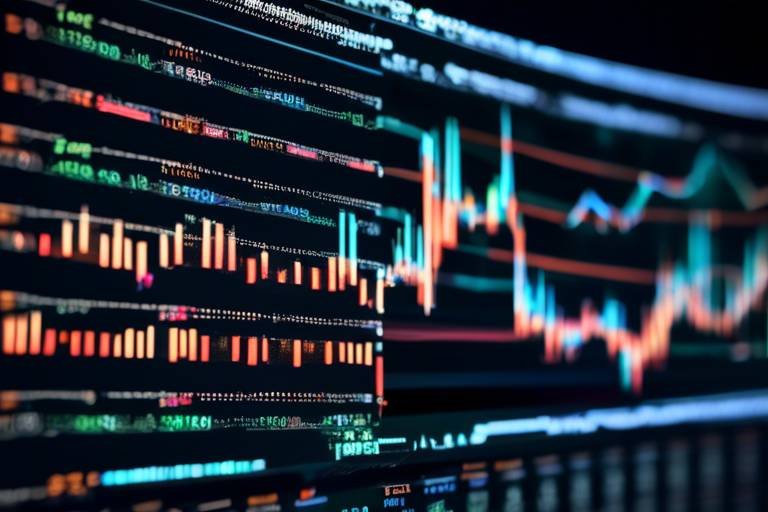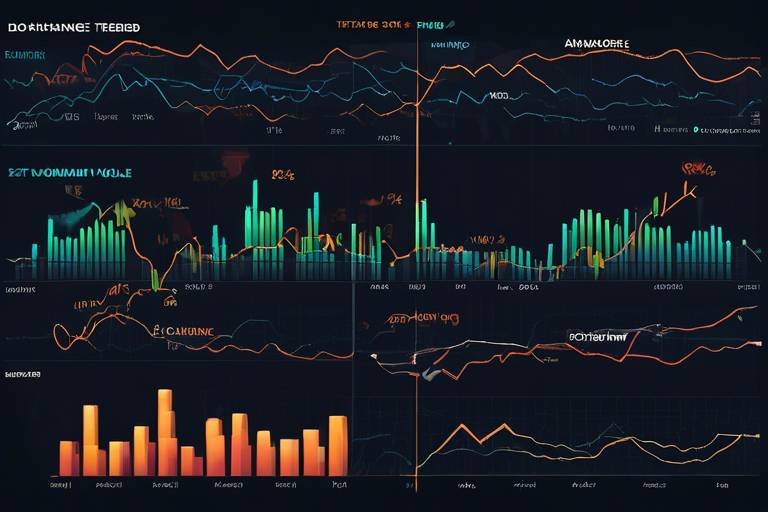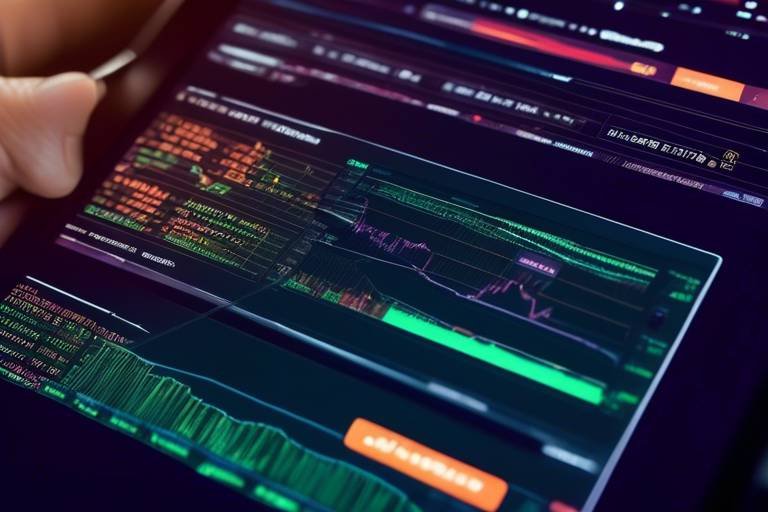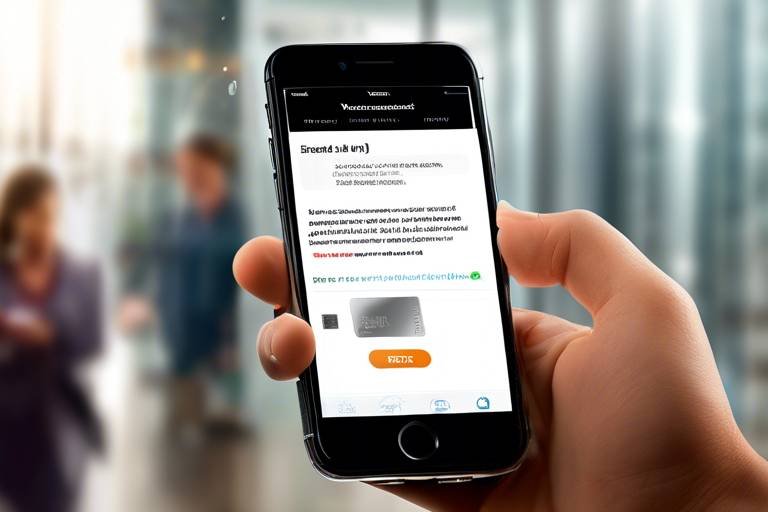The Importance of Regularly Updating Your Wallet Software
In the fast-paced world of digital finance, where every click can mean the difference between a secure transaction and a potential loss, regular updates to your wallet software are not just a good idea—they're essential. Imagine your wallet as a digital fortress; without regular reinforcements, it becomes vulnerable to attacks and breaches. This article dives deep into the various aspects of wallet software updates, shedding light on their critical role in enhancing security, performance, and overall user experience in today’s digital landscape.
One of the primary reasons to keep your wallet software updated is the security enhancements that come with each update. Think of these updates as the latest armor for your digital assets. They often include critical security patches designed to protect users from vulnerabilities that hackers might exploit. For instance, when a new security flaw is discovered, developers rush to create a patch to fix it. If you're not updating your software regularly, you might be leaving your digital wallet wide open for cybercriminals to exploit.
Understanding these enhancements helps users appreciate the importance of maintaining updated software. It’s not just about keeping up with the latest trends; it’s about actively safeguarding your financial future. So, the next time you see that update notification, remember: it’s your digital bodyguard asking for a little TLC.
Updating wallet software can significantly enhance its performance. Imagine trying to run a marathon in old, worn-out shoes—it's not only uncomfortable but also inefficient. Similarly, outdated wallet software can lead to sluggish transactions and frustrating lags. With each update, developers often optimize the code, ensuring that transactions are processed faster and more efficiently. This means that when you want to send or receive funds, you can do so with the confidence that your wallet is operating at its best.
Many software updates focus on optimizing the user interface, making it more intuitive and user-friendly. Whether you're a tech-savvy individual or a newcomer to the digital finance world, a well-designed wallet can make all the difference. Updates can introduce streamlined navigation, clearer layouts, and even personalized features that cater to your specific needs. This is especially beneficial for both new and experienced users, as it enhances the overall experience of managing digital assets.
Another exciting aspect of regular updates is the introduction of new features that enhance functionality. Recent updates have brought numerous beneficial features to wallet software, such as:
- Enhanced security options like two-factor authentication
- Integration with new cryptocurrencies
- Improved transaction tracking and reporting tools
These additions not only improve how you interact with your wallet but also ensure that you have access to the latest tools that can help you manage your digital assets more effectively.
Regular updates also address bugs and glitches that can hinder performance. Just as a car needs regular maintenance to run smoothly, your wallet software requires updates to fix issues that may arise. Bugs can lead to frustrating experiences, such as failed transactions or incorrect balances. By keeping your software updated, you ensure a smooth and reliable user experience, allowing you to focus on what truly matters: managing your finances.
As technology continues to evolve, wallet software must adapt to remain compatible with new systems and protocols. This is crucial for maintaining seamless operations and ensuring that you can interact with various platforms without a hitch. Regular updates help your wallet stay in sync with emerging technologies, enabling you to take advantage of new features and improvements as they become available.
In an ever-changing regulatory landscape, wallet software must comply with evolving regulations to ensure legal operation. Regular updates help wallets stay compliant with the latest financial and data protection laws. This is not just a technical requirement; it’s a legal necessity to protect both the users and the developers of the wallet software.
Failing to update wallet software can lead to non-compliance, resulting in potential penalties and legal issues. Imagine running a business without adhering to the latest regulations—it's a recipe for disaster. The same applies to your wallet. Neglecting software updates could expose you to risks that might not only affect your finances but also your reputation in the digital space.
Regular updates contribute to future-proofing your wallet against evolving threats and changes in the digital landscape. By staying proactive with software management, you ensure long-term security and functionality. It’s like planting a tree; the more you nurture it, the stronger it grows. So, invest in your wallet’s future by keeping it updated.
Q: How often should I update my wallet software?
A: It's best to update your wallet software as soon as updates are available. Regular updates help protect your assets and enhance performance.
Q: What happens if I ignore updates?
A: Ignoring updates can leave your wallet vulnerable to security threats and performance issues, potentially leading to lost funds or a frustrating user experience.
Q: Can I manually check for updates?
A: Yes, most wallet software allows you to manually check for updates in the settings or preferences menu.

Security Enhancements
In the ever-evolving world of digital finance, are more than just a luxury; they are a necessity. Every time you update your wallet software, you're not just getting new features or a snazzier interface—you're fortifying your defenses against potential threats. Think of your wallet as a digital fortress. Regular updates act like the vigilant guards who ensure that the walls are strong and impenetrable. Without these updates, your fortress could be vulnerable to attacks that could lead to the loss of your hard-earned digital assets.
One of the most critical aspects of security enhancements is the inclusion of security patches. These patches are designed to fix vulnerabilities that hackers could exploit. For instance, if a flaw is discovered in the encryption algorithm used by your wallet, a timely update will address this issue, effectively sealing off that entry point before malicious actors can take advantage of it. Here are some key reasons why security updates are vital:
- Protection Against Emerging Threats: Cyber threats are constantly evolving. What was considered secure yesterday may not be safe today. Regular updates equip your wallet with the latest defenses against new types of attacks.
- Mitigation of Known Vulnerabilities: As security researchers identify weaknesses, wallet developers release updates to patch these vulnerabilities. By not updating, you leave your wallet exposed to risks that could easily be mitigated.
- Enhanced Encryption Standards: Updates often come with improved encryption techniques, making it harder for unauthorized users to access your data.
Moreover, updates can also introduce features like two-factor authentication (2FA) or biometric security options, which add additional layers of protection. Imagine trying to enter a high-security building; having multiple checkpoints makes it significantly harder for unauthorized individuals to gain access. Similarly, implementing 2FA means that even if someone gets hold of your password, they would still need a second form of verification to access your wallet.
In addition, regular updates can also include security audits and reviews. These audits are performed by security experts who examine the wallet's code for any potential flaws. By keeping your wallet software updated, you ensure that these audits are up-to-date, providing you with the peace of mind that your digital assets are safeguarded by the latest security protocols.
In conclusion, neglecting wallet software updates is akin to leaving your front door wide open in a neighborhood known for its crime. By regularly updating your wallet, you not only protect your assets but also contribute to a more secure digital ecosystem for everyone. So, the next time you see that update notification, remember: it’s not just an inconvenience; it’s a crucial step towards securing your financial future.

Performance Improvements
When it comes to wallet software, performance is king. Imagine trying to send money to a friend during a dinner party, only to be stuck waiting for the transaction to process. Frustrating, right? Regular updates play a pivotal role in ensuring that your wallet software operates at peak efficiency, minimizing lag and enhancing the overall user experience. These updates often come packed with optimizations that can significantly speed up transaction times, making your digital interactions smoother and more enjoyable.
One of the key aspects of performance improvements in wallet software is the streamlining of transaction processes. Developers are constantly working to identify bottlenecks in the system and eliminate them. For example, recent updates might introduce a new algorithm that allows for quicker verification of transactions. This means that not only will your transactions go through faster, but you’ll also experience less downtime when accessing your wallet. It’s like upgrading from a bicycle to a sports car; everything just moves along at a much quicker pace!
Moreover, updates can enhance the responsiveness of the user interface. A wallet that is sluggish or unresponsive can be a major turn-off. With each update, developers often refine the design and functionality, ensuring that buttons are more responsive, menus are easier to navigate, and overall interaction feels fluid. This is particularly beneficial for users who may be new to digital wallets, as a more intuitive interface can help them feel more comfortable and confident in managing their assets.
To illustrate the impact of performance improvements, let’s take a look at a table comparing transaction times before and after a typical software update:
| Transaction Type | Before Update (seconds) | After Update (seconds) |
|---|---|---|
| Simple Transfer | 15 | 5 |
| Complex Transfer | 30 | 10 |
| Multi-Currency Exchange | 45 | 20 |
As you can see from the table, the performance enhancements from updates can drastically reduce the time it takes to complete various transactions. Not only does this save you time, but it also enhances your overall satisfaction with the wallet software. Think about it: in a world where instant gratification is the norm, waiting around for transactions to go through just isn’t going to cut it!
In conclusion, regular updates are essential for maintaining and improving the performance of your wallet software. They not only ensure faster transaction times and a more responsive user interface but also enhance your overall experience. So, the next time you receive a notification prompting you to update your wallet, remember that it’s not just a routine task—it’s a crucial step towards a smoother, more efficient digital financial experience.
- Why are performance improvements important in wallet software? Performance improvements ensure that transactions are processed quickly and efficiently, enhancing user satisfaction and minimizing frustration.
- How often should I update my wallet software? It's recommended to update your wallet software as soon as updates are available to benefit from the latest performance enhancements and security features.
- What happens if I ignore wallet software updates? Ignoring updates can lead to slower performance, potential security vulnerabilities, and an overall poor user experience.

User Experience Optimization
When it comes to wallet software, user experience is everything. Imagine trying to navigate a complex maze without a map; frustrating, right? That's how users feel when they encounter clunky interfaces or confusing navigation in their wallets. Regular updates focus on optimizing the user interface, making it more intuitive and user-friendly. These enhancements can significantly reduce the learning curve for new users while providing seasoned veterans with the tools they need to manage their digital assets efficiently.
One of the most exciting aspects of these updates is the incorporation of user feedback. Developers are constantly listening to their user base, and many updates are driven by real-world experiences. This means that if you’ve ever found a feature difficult to use or noticed a hiccup in the interface, chances are, it might be addressed in the next update. For instance, a recent update might have streamlined the transaction process, allowing users to send and receive funds with just a couple of clicks. This not only saves time but also reduces the likelihood of errors, which can be incredibly costly in the world of digital finance.
Furthermore, updates often introduce visual enhancements that can make the wallet more appealing to the eye. After all, who wants to use a dull and outdated interface? A fresh look can breathe new life into the user experience, making it more enjoyable and engaging. Features like dark mode, customizable themes, and improved graphics can transform a mundane task into a delightful experience. By making the wallet visually appealing, users are more likely to engage with it regularly, leading to better management of their digital assets.
Another critical aspect of user experience optimization is the integration of educational resources. Many wallet updates now include tutorials, FAQs, and even live support options. This ensures that users, regardless of their experience level, have the resources they need to navigate the software confidently. Imagine having a friendly guide at your side, ready to help you with any questions you might have. This kind of support can turn a daunting task into a walk in the park.
In addition to these improvements, updates often enhance the wallet's mobile functionality. With more people relying on their smartphones for financial transactions, ensuring that the wallet operates smoothly on mobile devices is essential. Updates may include responsive designs, faster load times, and mobile-specific features, all aimed at providing a seamless experience whether you’re at home or on the go.
Ultimately, the goal of user experience optimization in wallet software is to create an environment where users feel comfortable and empowered. Regular updates play a crucial role in achieving this, ensuring that the wallet not only meets but exceeds user expectations. So, the next time you see that update notification, remember that it’s not just a routine fix; it’s an opportunity for a better, more efficient, and more enjoyable experience.
- Why are updates important for wallet software?
Updates are crucial for enhancing security, improving performance, and optimizing user experience. - How often should I update my wallet software?
It's best to update your wallet software as soon as updates are available to ensure maximum protection and functionality. - What happens if I don't update my wallet software?
Neglecting updates can lead to security vulnerabilities, performance issues, and potential non-compliance with regulations.

Feature Additions
When it comes to wallet software, one of the most exciting aspects of regular updates is the introduction of new features that can significantly enhance user experience. Imagine your wallet as a smartphone; just as your phone receives updates to add new functionalities, your wallet software does the same. These updates not only make the wallet more versatile but also improve its overall usability, making it a vital tool for managing your digital assets.
For instance, recent updates have introduced features like multi-currency support, allowing users to manage various cryptocurrencies all in one place. This is akin to having a Swiss Army knife in your pocket; it’s compact yet equipped to handle multiple tasks. With the ability to store different currencies, users can effortlessly switch between assets without the hassle of using multiple wallets.
Additionally, many wallet updates now include enhanced security features, such as biometric authentication. This means that instead of just entering a password, you can unlock your wallet using your fingerprint or facial recognition. This is a game-changer, as it adds an extra layer of security while also making access more convenient. Think about it: would you rather remember a complex password or just use your thumbprint?
Another notable feature is the integration of decentralized finance (DeFi) functionalities. With the rise of DeFi, many wallets are now enabling users to lend, borrow, and earn interest on their holdings directly from the wallet interface. This not only saves time but also empowers users to take full advantage of their digital assets without needing to navigate multiple platforms.
Moreover, updates often come with user-friendly interfaces that make navigation smoother and more intuitive. Wallets are increasingly designed to cater to both tech-savvy users and those who are new to the cryptocurrency world. For example, new dashboards provide a clear overview of your portfolio, recent transactions, and market trends, making it easier than ever to manage your investments.
In summary, the feature additions that come with wallet software updates are not just enhancements; they are essential upgrades that cater to the evolving needs of users. By embracing these updates, you are not only improving your wallet's functionality but also ensuring that you are equipped with the tools necessary to navigate the fast-paced digital landscape effectively.
- Why are feature additions important in wallet software updates?
Feature additions enhance the functionality and usability of the wallet, allowing users to manage their digital assets more effectively. - How do new features improve security?
New features often include advanced security measures like biometric authentication, which provide an extra layer of protection for users' assets. - Can I manage multiple cryptocurrencies in one wallet?
Yes, many wallet updates now support multi-currency management, enabling users to handle various cryptocurrencies seamlessly. - What is DeFi, and how does it relate to wallet software?
Decentralized Finance (DeFi) refers to financial services built on blockchain technology. Many wallet updates now integrate DeFi functionalities, allowing users to lend, borrow, and earn interest directly from their wallets.
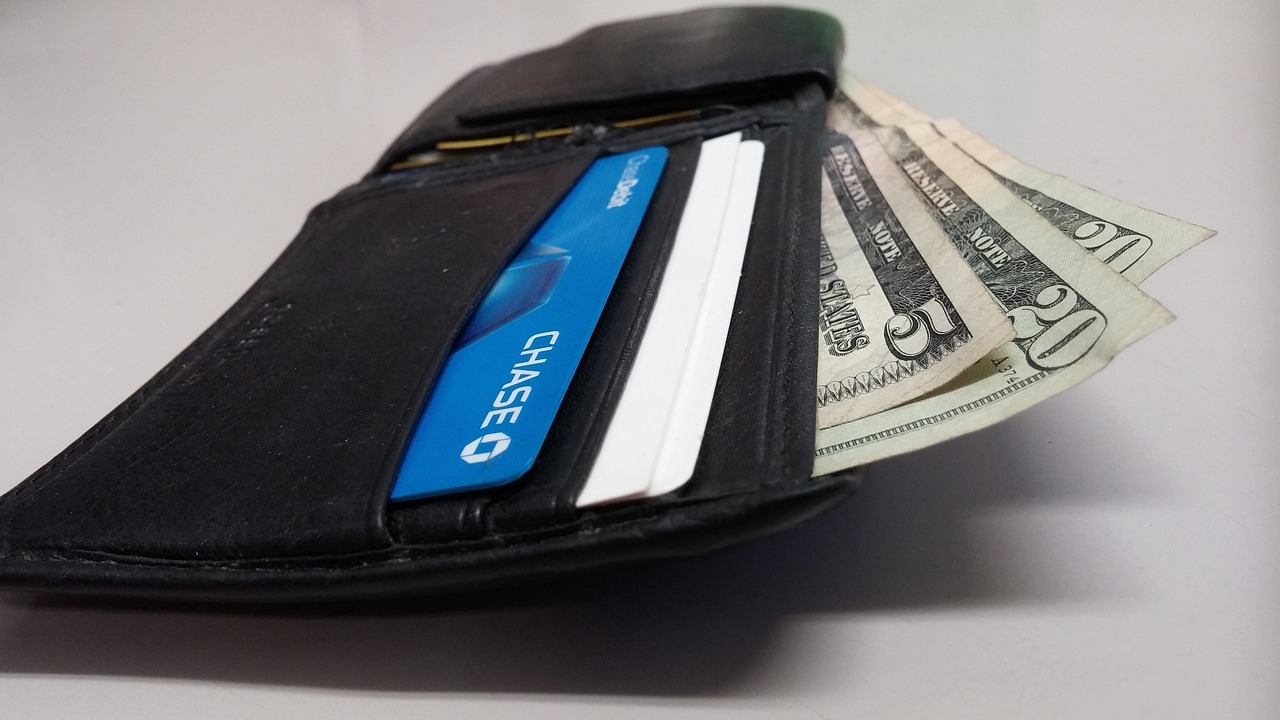
Bug Fixes
When it comes to wallet software, bugs can be more than just pesky annoyances; they can compromise your entire digital experience. Regular updates play a crucial role in addressing these bugs, ensuring that your wallet operates smoothly and efficiently. Think of your wallet as a finely tuned machine. Just as a car needs regular maintenance to keep it running optimally, your wallet software requires updates to fix any underlying issues that may arise over time.
Imagine trying to drive a car with a faulty transmission. It might work for a while, but eventually, you'll face serious problems that could leave you stranded. Similarly, bugs in wallet software can lead to transaction errors, data loss, or even security vulnerabilities. By implementing bug fixes, developers not only enhance the performance of the wallet but also safeguard your digital assets from potential threats.
Here are some common types of bugs that updates typically address:
- Transaction Errors: Bugs that cause transactions to fail or not process correctly can be incredibly frustrating. Regular updates help ensure that your transactions are completed smoothly.
- Interface Glitches: Sometimes, the user interface may not respond as expected, leading to confusion. Updates can resolve these issues, making the wallet more user-friendly.
- Security Vulnerabilities: Bugs can create loopholes that malicious actors might exploit. Timely updates patch these vulnerabilities, keeping your assets secure.
In addition to fixing bugs, updates often include performance enhancements that can lead to a more responsive and enjoyable user experience. For instance, you may notice that after an update, your wallet opens faster, transactions are processed more quickly, and overall navigation feels smoother. These improvements can make a significant difference, especially for users who rely on their wallets for daily transactions.
Moreover, the process of fixing bugs is not just about immediate fixes; it also contributes to the long-term health of the software. Developers continuously monitor user feedback and performance metrics to identify recurring issues. By addressing these bugs promptly, they can prevent larger problems from developing in the future, ensuring that your wallet remains robust and reliable.
In conclusion, regular updates that include bug fixes are essential for maintaining the integrity of your wallet software. They not only enhance performance and user experience but also protect your digital assets from potential threats. So, the next time you see an update notification, remember that it's not just a routine upgrade; it's a vital step in ensuring the security and efficiency of your digital wallet.
- Why are bug fixes necessary for wallet software? Bug fixes are essential to ensure that the software runs smoothly, prevents transaction errors, and protects against security vulnerabilities.
- How often should I update my wallet software? It's recommended to update your wallet software as soon as updates are available to ensure you benefit from the latest security patches and performance improvements.
- What happens if I ignore wallet software updates? Ignoring updates can lead to unresolved bugs, security vulnerabilities, and potential non-compliance with regulations, putting your assets at risk.

Compatibility with New Technologies
In an ever-evolving digital landscape, is not just a luxury; it’s a necessity. As advancements in technology emerge, wallet software must adapt to ensure seamless integration with various systems and protocols. Think of it like upgrading your phone’s operating system; if you don’t keep up, you might miss out on essential features and security enhancements. This is especially true for wallet software, which often interacts with a myriad of platforms, from blockchain networks to payment gateways.
When wallet software developers roll out updates, they are often addressing compatibility issues that arise from new technologies. For instance, the introduction of new cryptocurrencies or changes in blockchain protocols can render outdated wallet software ineffective or even insecure. Regular updates ensure that your wallet can handle these changes smoothly, allowing you to transact without a hitch. Imagine trying to send a message on a new app with an outdated phone—frustrating, right? The same principle applies to wallet software.
Furthermore, compatibility isn’t solely about keeping up with cryptocurrencies. It also involves adapting to new security measures, user interfaces, and payment methods. As digital currencies become more mainstream, the demand for wallets that can support various transaction types grows. This means that wallet software needs to be flexible and responsive to changes in the market. For example, the rise of decentralized finance (DeFi) has introduced a slew of new protocols that wallets must support to remain relevant.
To illustrate the importance of compatibility, consider the following table that outlines some recent technological advancements and their implications for wallet software:
| Technology | Implication for Wallet Software |
|---|---|
| Blockchain Upgrades | Wallets must incorporate new consensus mechanisms and transaction types. |
| Decentralized Applications (dApps) | Wallets need to support interactions with various dApps to facilitate user engagement. |
| Payment Protocols (e.g., Lightning Network) | Wallets must implement support for faster, low-cost transactions. |
| Regulatory Changes | Wallets must adapt to comply with new financial regulations. |
In summary, the need for wallet software to remain compatible with emerging technologies cannot be overstated. Regular updates not only ensure that your wallet functions correctly with the latest innovations but also safeguard your investments against potential vulnerabilities. By keeping your wallet software updated, you’re not just enhancing your user experience; you’re also future-proofing your digital assets against the rapid changes that characterize the tech world.
- Why is it important to update my wallet software regularly? Regular updates enhance security, improve performance, and ensure compatibility with new technologies.
- What happens if I don’t update my wallet software? Failing to update can lead to security vulnerabilities, performance issues, and incompatibility with new features or protocols.
- How can I ensure my wallet software is up-to-date? Most wallet applications have automatic update features, but you can also check for updates manually in the settings.
- Are there risks associated with updating wallet software? While updates are generally safe, it’s crucial to download updates from official sources to avoid malware or phishing attempts.

Regulatory Compliance
In the ever-evolving world of digital finance, is not just a buzzword; it’s a necessity. As governments and regulatory bodies worldwide adapt to the rapid growth of cryptocurrencies and digital wallets, ensuring that your wallet software remains compliant is crucial for its longevity and functionality. Regular updates play a pivotal role in this aspect, allowing wallet providers to align their services with the latest financial regulations and data protection laws.
When wallet software is updated, it often includes modifications that reflect the most recent legal requirements. For instance, regulations may dictate how user data is handled, ensuring that personal information is protected and that users have a say in how their data is used. By keeping your wallet software updated, you help ensure that it adheres to these standards, thereby protecting both your assets and your rights as a user.
Moreover, the landscape of regulations can vary significantly by region. For example, the General Data Protection Regulation (GDPR) in Europe sets stringent rules regarding data privacy, while the Bank Secrecy Act (BSA) in the United States requires financial institutions to report suspicious activities. Each time a regulatory body updates its guidelines, wallet software must adapt accordingly. This is where regular updates come into play, acting as a bridge between compliance and user security.
Failure to comply with these regulations can result in severe consequences, not only for the wallet providers but also for users. Non-compliance can lead to hefty fines, legal repercussions, and even the shutdown of services, leaving users stranded without access to their digital assets. Therefore, staying updated is not merely about functionality; it’s about safeguarding your investments and ensuring that you’re engaging with a reputable service.
To illustrate the importance of compliance, consider the following table that outlines potential risks associated with non-compliance:
| Risk | Consequence |
|---|---|
| Fines and Penalties | Significant financial loss for wallet providers, potentially passed onto users. |
| Legal Actions | Litigation against wallet providers, leading to service disruption. |
| Loss of User Trust | Users may abandon non-compliant wallets, resulting in a loss of business. |
| Service Shutdown | Inability to operate legally, leading to the termination of services. |
In summary, regular updates not only enhance the functionality of your wallet software but also ensure that it remains compliant with the latest regulations. This proactive approach helps in future-proofing your wallet against evolving legal landscapes, making it a wise choice for anyone looking to secure their digital assets.
- What happens if my wallet software is not updated? Non-updated software may become vulnerable to security breaches and may not comply with the latest regulations.
- How often should I update my wallet software? It’s advisable to update your wallet software as soon as new versions are released or notifications are provided.
- Can I lose my assets if my wallet is non-compliant? Yes, non-compliance can lead to legal actions that may restrict access to your assets.

Impact of Non-Compliance
Ignoring the importance of regularly updating your wallet software can lead to severe repercussions, both for individual users and businesses alike. When software is not updated, it becomes increasingly vulnerable to security breaches and hacking attempts. Imagine leaving your front door unlocked; it’s an open invitation for anyone to walk in and take what they want. Similarly, outdated wallet software can expose your digital assets to malicious actors looking to exploit weaknesses.
Furthermore, non-compliance with regulatory standards can result in hefty penalties. Authorities are cracking down on digital wallets that fail to adhere to the latest financial regulations, and the consequences can be dire. For instance, businesses that don’t keep their wallet software updated may face fines that can reach thousands, or even millions, of dollars. Not only does this affect the bottom line, but it can also tarnish a company's reputation in the eyes of customers who expect their financial data to be handled securely.
Additionally, the impact of non-compliance extends beyond just financial penalties. It can lead to a loss of customer trust. In a world where data breaches make headlines almost daily, users are becoming increasingly cautious about where they store their money. If your wallet software is outdated and non-compliant, users may choose to take their business elsewhere. This loss of trust can be incredibly difficult to regain, and it can take years to rebuild a tarnished reputation.
To illustrate the potential consequences of non-compliance, consider the following table:
| Consequence | Description |
|---|---|
| Financial Penalties | Fines imposed by regulatory bodies for failing to comply with laws. |
| Loss of Customer Trust | Customers may abandon your wallet service in favor of more secure options. |
| Legal Repercussions | Potential lawsuits from users affected by security breaches. |
| Operational Disruption | Time and resources spent on rectifying compliance issues can hinder business operations. |
In summary, the impact of non-compliance can be profound and far-reaching. By neglecting to update wallet software, users and businesses alike risk not only their financial assets but also their credibility and operational efficiency. Staying compliant is not just about avoiding penalties; it’s about ensuring peace of mind and fostering a secure environment for all users.
1. Why is it important to update wallet software regularly?
Regular updates are crucial for enhancing security, improving performance, and ensuring compliance with the latest regulations.
2. What are the risks of not updating wallet software?
Failing to update can lead to security vulnerabilities, financial penalties for non-compliance, and a loss of customer trust.
3. How often should I check for updates?
It’s advisable to check for updates at least once a month or enable automatic updates if available.
4. Can I continue using my wallet if it’s outdated?
While you can technically continue using outdated software, it poses significant risks to your security and compliance.
5. What should I do if I notice a security issue?
Immediately update your wallet software and report the issue to the wallet provider for assistance.

Future-Proofing Your Wallet
In today's fast-paced digital world, future-proofing your wallet software is more important than ever. As technology advances at lightning speed, the tools we use to manage our digital assets must adapt accordingly. Imagine your wallet as a sturdy ship navigating the unpredictable waters of the internet; without regular maintenance and upgrades, it risks capsizing at any moment. Regular software updates are akin to upgrading the ship's hull and sails, ensuring it can withstand storms and sail smoothly into the future.
One of the key components of future-proofing is staying ahead of emerging threats. Cybersecurity is a constantly evolving battlefield, with new vulnerabilities appearing almost daily. By keeping your wallet software up to date, you are essentially fortifying your defenses against potential attacks. Each update often includes patches for newly discovered vulnerabilities, which can prevent hackers from exploiting weaknesses in your software. This proactive approach not only protects your assets but also builds your confidence in using digital wallets.
Moreover, as new technologies emerge, such as blockchain innovations and decentralized finance (DeFi), your wallet software must be compatible with these advancements. Regular updates ensure that your wallet can integrate with the latest protocols and features, allowing you to take advantage of new opportunities in the digital economy. For instance, if a new cryptocurrency gains popularity, an updated wallet will likely include support for it, enabling you to diversify your investments seamlessly.
Additionally, future-proofing your wallet involves compliance with changing regulations. The digital finance landscape is subject to evolving laws and guidelines, which can vary significantly from one jurisdiction to another. Regular updates help ensure your wallet remains compliant with these regulations, thereby avoiding potential legal issues. Failing to keep up could result in your wallet being rendered obsolete or, worse, facing penalties for non-compliance.
It's also worth noting that user experience is a crucial aspect of future-proofing. As user expectations evolve, wallet software must adapt to provide an intuitive and seamless experience. Updates that enhance user interfaces or introduce new functionalities can make all the difference in retaining users. A wallet that is easy to navigate and loaded with features will not only attract new users but also keep existing ones engaged.
To summarize, future-proofing your wallet software is not just about keeping it functional; it's about ensuring it remains a reliable tool in an ever-changing digital landscape. By prioritizing regular updates, you are investing in the longevity and security of your digital assets. Remember, in the world of technology, staying still is not an option. So, make it a habit to check for updates regularly and embrace the changes that come with them.
- Why is it important to update my wallet software regularly? Regular updates enhance security, improve performance, and ensure compatibility with new technologies.
- What happens if I don't update my wallet software? Failing to update can expose your wallet to security vulnerabilities, performance issues, and potential legal non-compliance.
- How can I ensure my wallet software is up to date? Most wallet software has an automatic update feature; however, you can also check the official website or app store for the latest version.
- Are there any risks associated with updating wallet software? While updates are generally safe, it’s crucial to download them from official sources to avoid malware or phishing scams.
Frequently Asked Questions
- Why is it important to regularly update my wallet software?
Regular updates are essential for enhancing security, improving performance, and optimizing user experience. Just like keeping your home secure with new locks, updating wallet software protects your digital assets from vulnerabilities and threats.
- What kind of security enhancements can I expect from updates?
Updates often include critical security patches that address known vulnerabilities. This means that by updating, you're fortifying your wallet against potential attacks, much like adding a security system to your house.
- How do updates improve the performance of my wallet?
Updating your wallet software can lead to faster transaction speeds and reduced lag. Think of it like tuning up your car; regular maintenance helps it run smoothly and efficiently, ensuring you reach your destination without delays.
- What are some user experience optimizations I might see?
Many updates focus on making the wallet interface more intuitive and user-friendly. This can include streamlined navigation and easier access to features, making it simpler for both newbies and seasoned users to manage their assets.
- Are there new features introduced in updates?
Absolutely! Updates frequently bring new features that enhance functionality. It's like getting a new app on your phone that makes life easier; these additions can significantly improve how you interact with your wallet.
- What happens if I ignore wallet software updates?
Neglecting updates can lead to security vulnerabilities, performance issues, and even non-compliance with regulations. It's similar to ignoring warning lights in your car; the longer you wait, the more significant the problems can become.
- How do updates ensure compliance with regulations?
Wallet software updates help maintain compliance with evolving financial and data protection laws. Staying updated is crucial, as regulations change frequently, and non-compliance can lead to legal penalties.
- What does future-proofing my wallet mean?
Future-proofing your wallet through regular updates means preparing it for upcoming threats and technological changes. Just like investing in a durable phone case, keeping your software updated helps ensure it can withstand the test of time.








